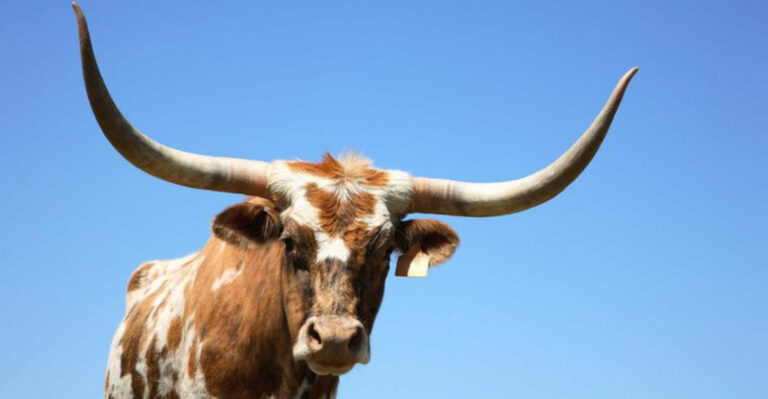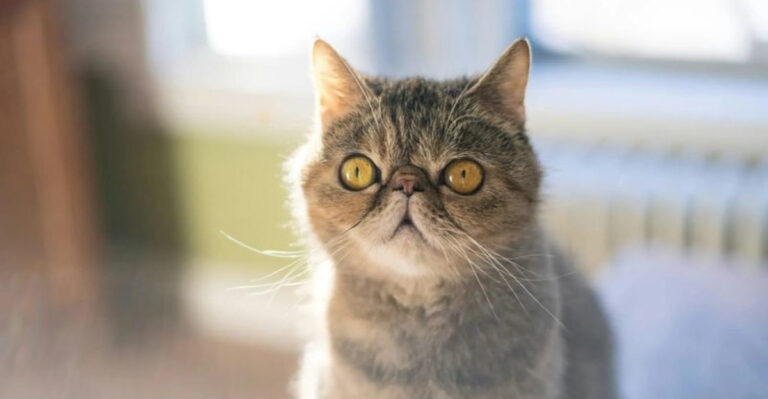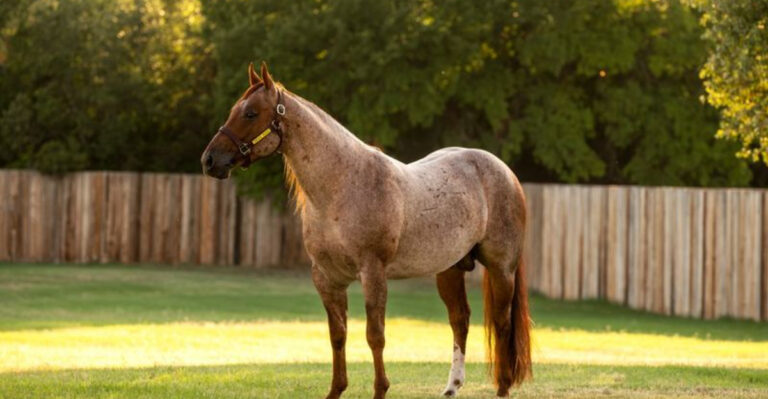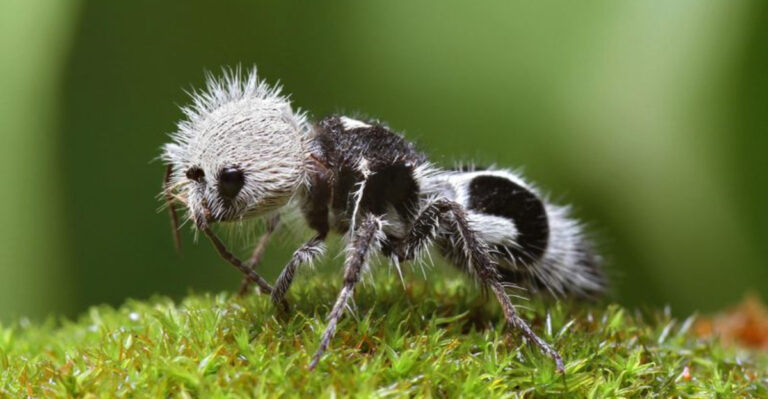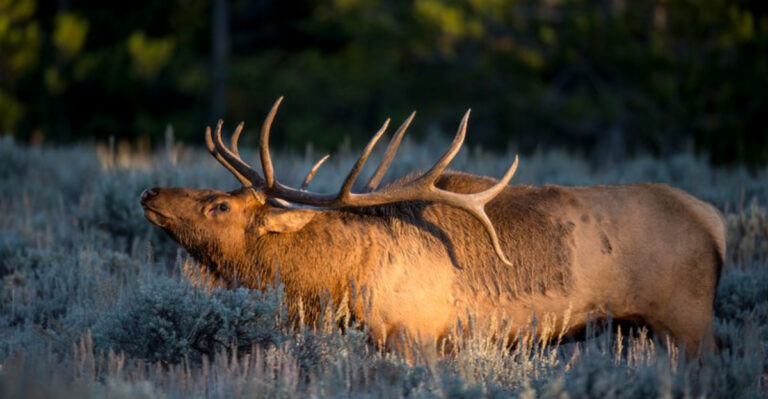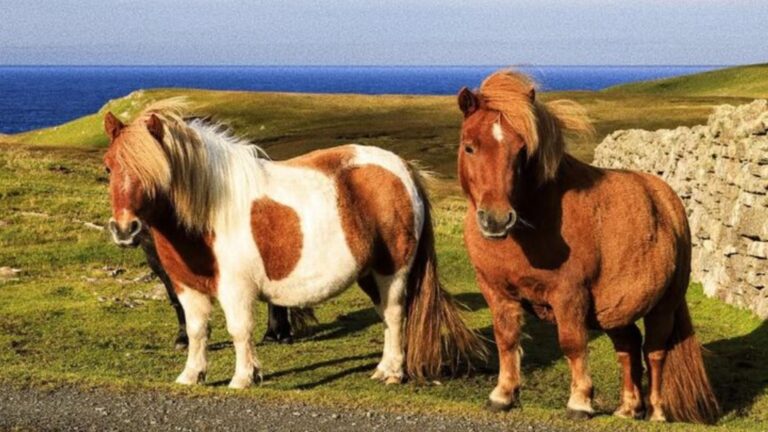15 Enchanting Colors And Patterns Of Persian Cats
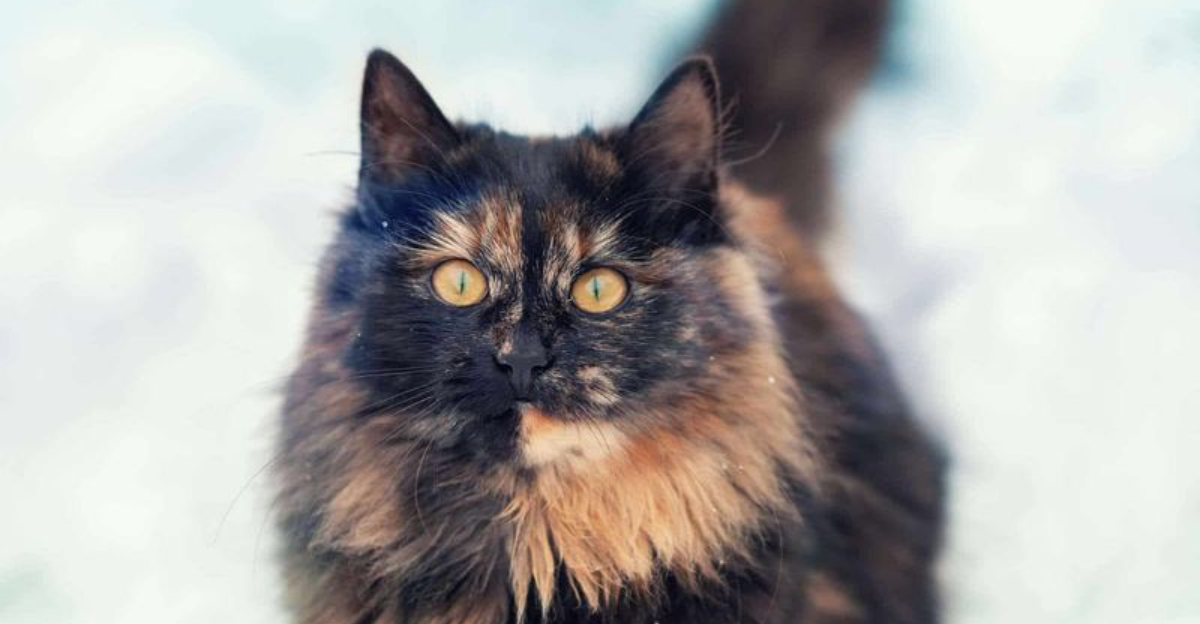
Persian cats captivate cat lovers with their luxurious coats that come in a rainbow of colors and patterns. These fluffy felines showcase some of nature’s most beautiful designs, from solid shades to intricate tabby markings.
Whether you’re a Persian cat owner or simply an admirer, discovering the variety of their coat colors reveals why they’ve been cherished companions for centuries.
1. Solid White Wonder
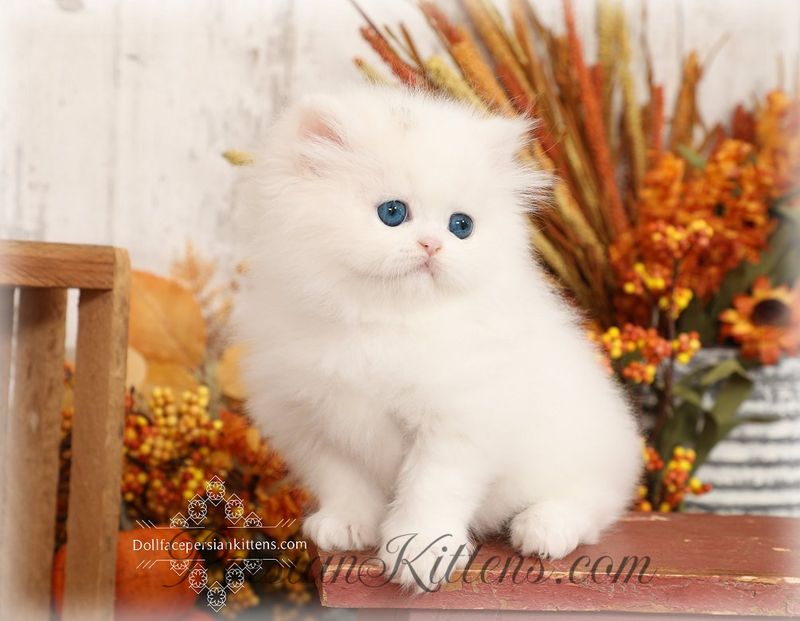
Like fresh snow under moonlight, white Persians possess an almost magical quality. Their pristine coats require extra care to prevent staining around the eyes and mouth.
Many white Persians have striking copper, blue, or odd-colored eyes that create a stunning contrast against their snow-white fur. Did you know? White Persians with blue eyes have a higher chance of being deaf.
2. Midnight Black Elegance
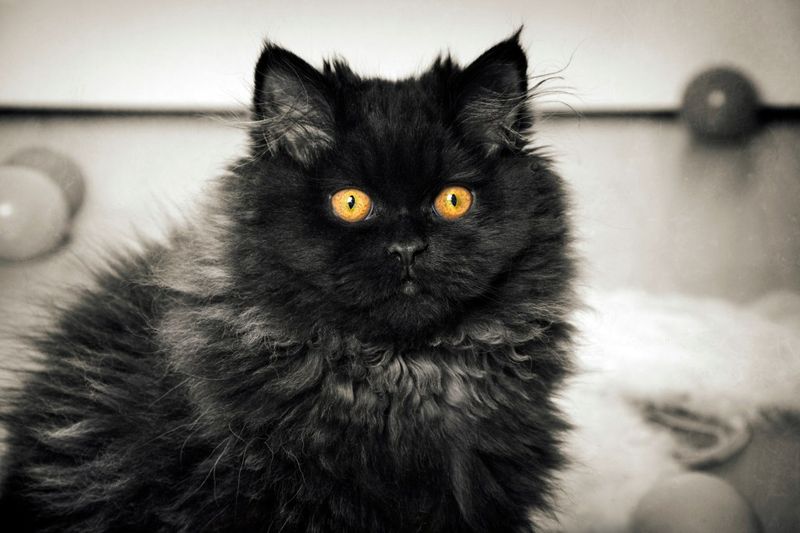
Velvet shadows come to life in black Persian cats. Their dense ebony coats absorb light rather than reflect it, creating a mysterious, luxurious appearance that’s truly eye-catching.
Sunlight reveals hidden rusty undertones in some black Persians, a secret only visible in certain lighting. Regular brushing prevents their dark fur from looking dusty or dull.
3. Dreamy Blue Smoke
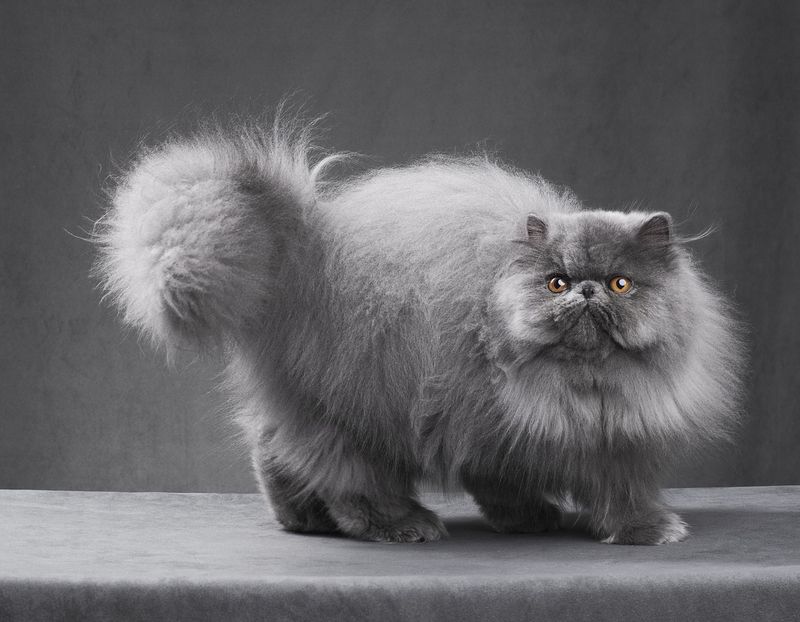
Smoke Persians carry a genetic surprise – hair shafts that are dark at the tips but light at the base. Blue smoke varieties appear almost silver-blue when they move, creating an ethereal, shifting appearance.
Running your fingers through their coat reveals the lighter undercoat, like parting clouds to find silver linings. This mesmerizing color changes dramatically in different lighting conditions.
4. Copper Penny Red
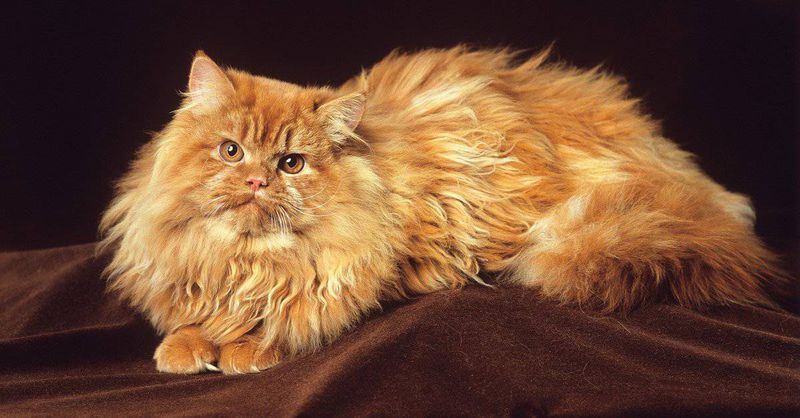
Glowing like embers, red Persians (sometimes called flame) carry a vibrant orange-red coat that seems to radiate warmth. Their rich coloration develops gradually, often deepening as they mature.
The intensity varies from deep copper to bright orange, with males typically showing more vivid coloration. These fiery felines pair their bold coats with gold or copper eyes that enhance their warm appearance.
5. Chocolate Delight
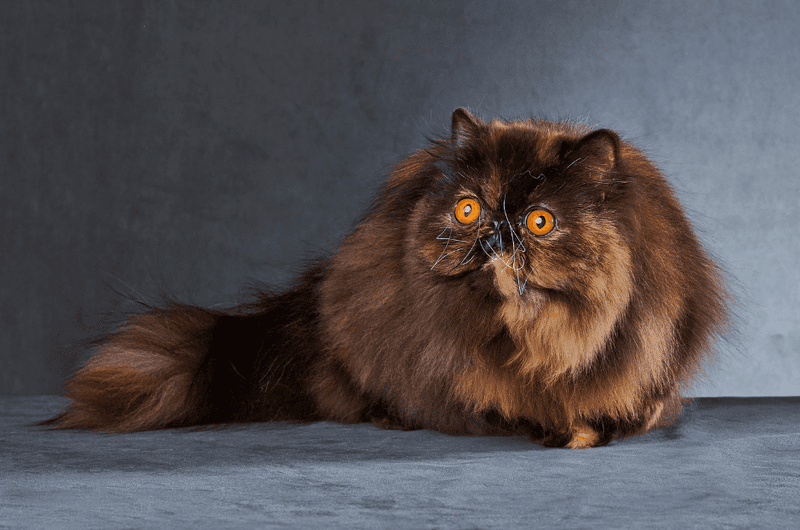
Reminiscent of rich cocoa, chocolate Persians display a warm brown coat that’s relatively rare in the breed. Their color ranges from milk chocolate to dark truffle, often paired with striking amber eyes.
This delectable color comes from a specific genetic dilution of black pigment. Young chocolate kittens sometimes look almost black before their true color emerges with age.
6. Lavender Mist
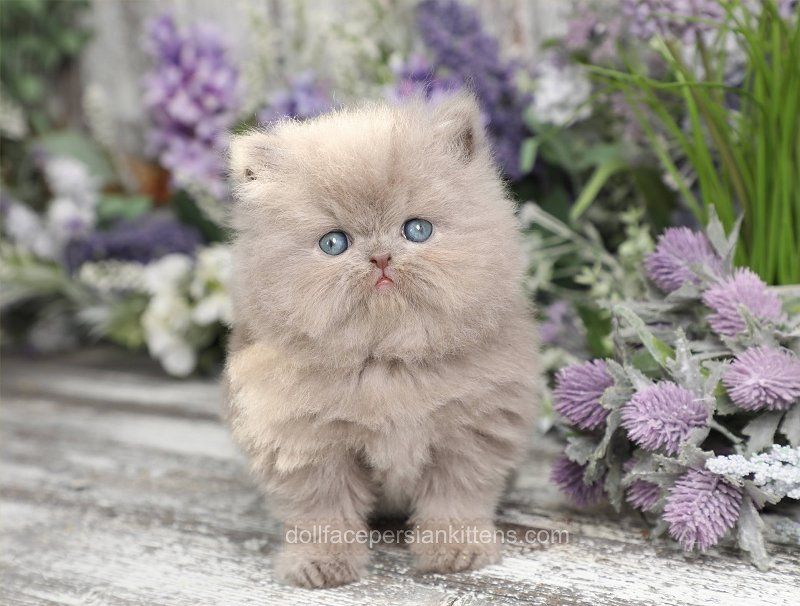
Fairy-tale cats come to life with lavender Persians, whose coats display a soft, pale pinkish-gray hue that’s utterly unique. Their coloration comes from a dilution gene affecting chocolate pigment.
Often mistaken for blue in photographs, true lavender reveals its rosy undertones in natural light. These rare beauties typically have aqua or copper eyes that complement their delicate coloring.
7. Classic Tabby Treasure
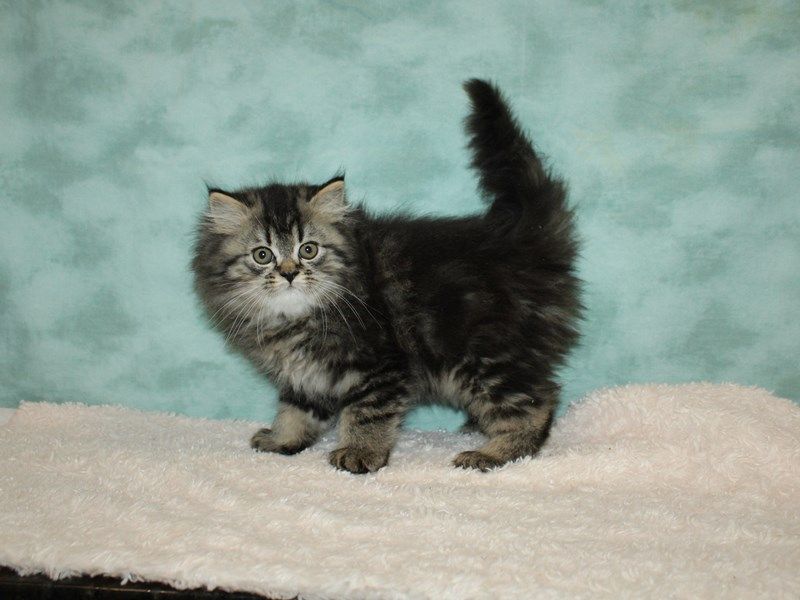
Mother Nature’s artwork shines in classic tabby Persians, with bold swirls creating a marble-cake pattern across their sides. The distinctive “M” marking on their foreheads is said to be blessed by the prophet Muhammad in Islamic legend.
Their symmetrical bullseye patterns on each side resemble ancient Celtic spirals. Classic tabbies come in various base colors, with brown being the most recognized.
8. Shaded Silver Sophistication
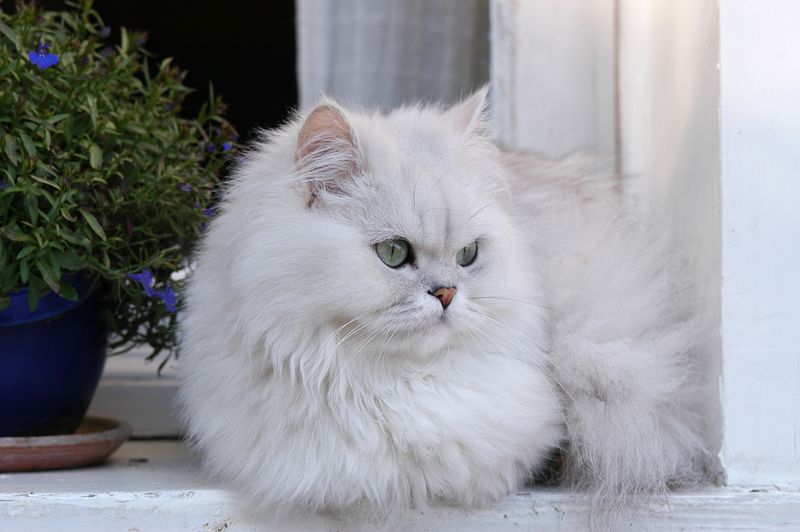
Frost-tipped fur creates the illusion of a silver halo around shaded silver Persians. Only the outer tips of each hair shaft carry color, leaving a white undercoat that creates dramatic contrast.
Movement transforms these cats, with each step revealing the bright silver undercoat beneath their darker mantle. Their emerald or copper eyes shine like jewels against the silvery backdrop of their faces.
9. Chinchilla Charm
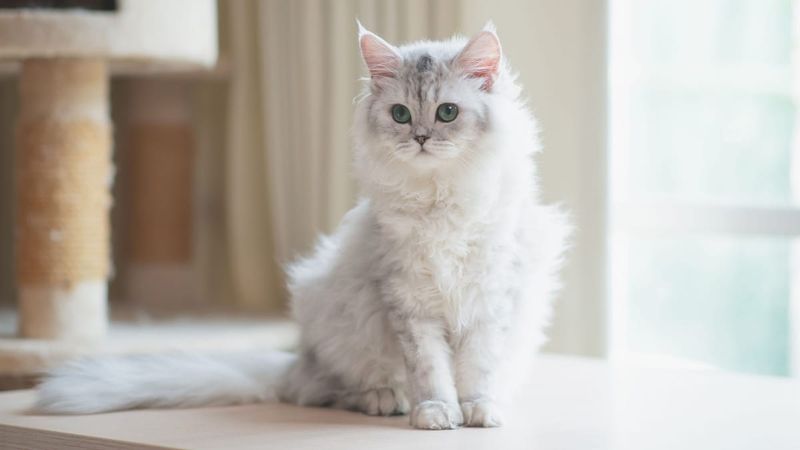
Seemingly dusted with diamond powder, chinchilla Persians have white coats with just the very tips of each hair carrying black pigment. This creates a sparkling, ethereal appearance that changes with every movement.
Their emerald or blue-green eyes are outlined with dark “mascara” that makes them appear perpetually expressive. True chinchillas have even less tipping than shaded silvers – only about 1/8th of each hair carries color.
10. Calico Patchwork
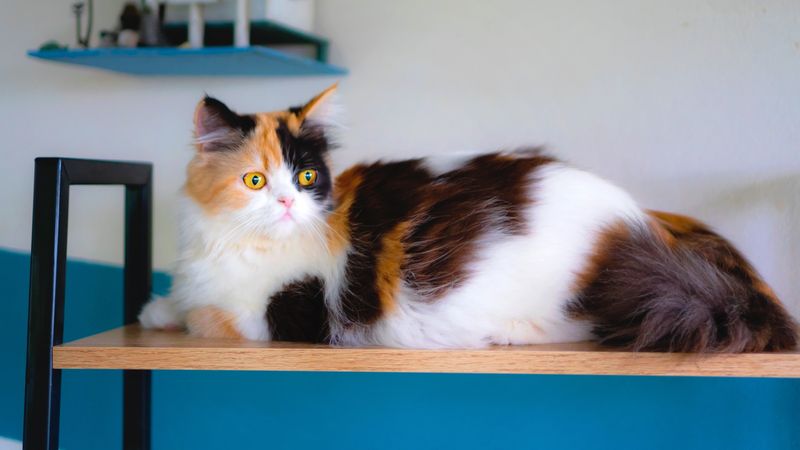
Walking mosaics of color, calico Persians display a charming combination of white, black, and orange patches scattered across their fluffy bodies. Almost exclusively female due to the genetic linkage of coat color to the X chromosome.
No two calicos share the exact same pattern, making each one a unique living artwork. The patches can vary from large color blocks to tiny speckles, with some showing tabby patterns within the colored areas.
11. Tortoiseshell Tapestry
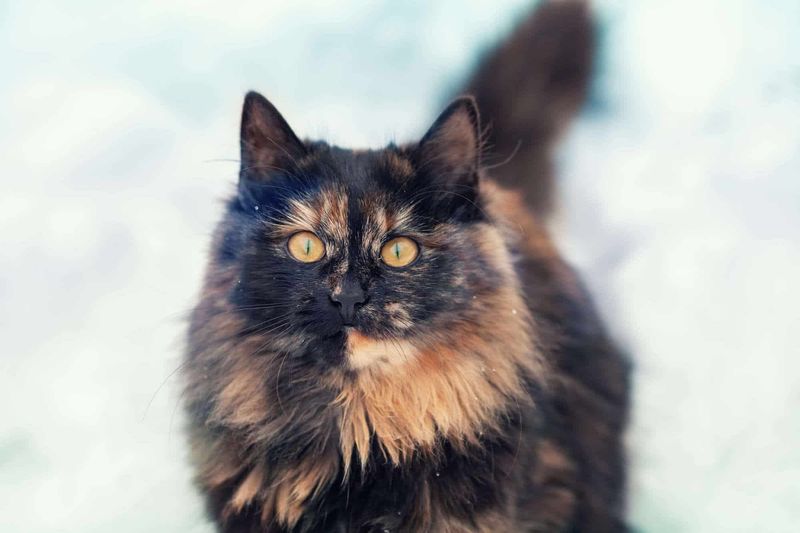
Swirled like molten lava, tortoiseshell Persians showcase a mesmerizing blend of black and red without distinct patches. Their brindled pattern creates a marbled effect where colors blend together rather than form clear boundaries.
Almost always female, these cats often develop strong personalities that match their striking appearance. Tortie Persians sometimes have “chimera faces” with a dramatic color split right down the middle.
12. Bicolor Brilliance
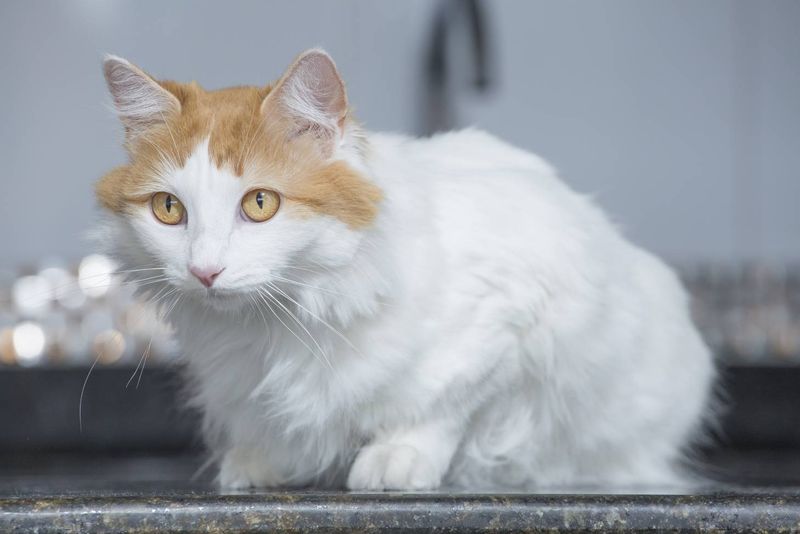
Like they’ve been dipped in paint, bicolor Persians feature a white base coat with colored patches in specific patterns. The most striking variant is the “van” pattern, with color appearing only on the head and tail.
Tuxedo bicolors wear formal black and white, while others might sport blue, cream, or red with white. The amount of white varies greatly, from minimal white mittens to predominantly white bodies.
13. Cream Puff Perfection
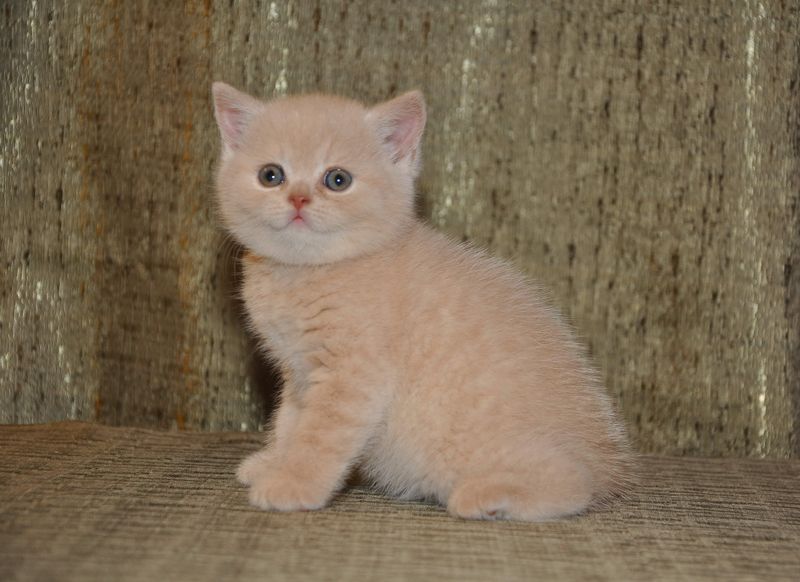
Gentle as sunrise, cream Persians display a soft, diluted red coat that ranges from pale butter to rich apricot tones. Their color develops gradually, often deepening or becoming more vibrant with age.
Cream is actually a dilute version of the red gene, creating a softer, pastel appearance. These sweet-looking cats typically have copper or gold eyes that enhance their warm, approachable appearance.
14. Himalayan Points
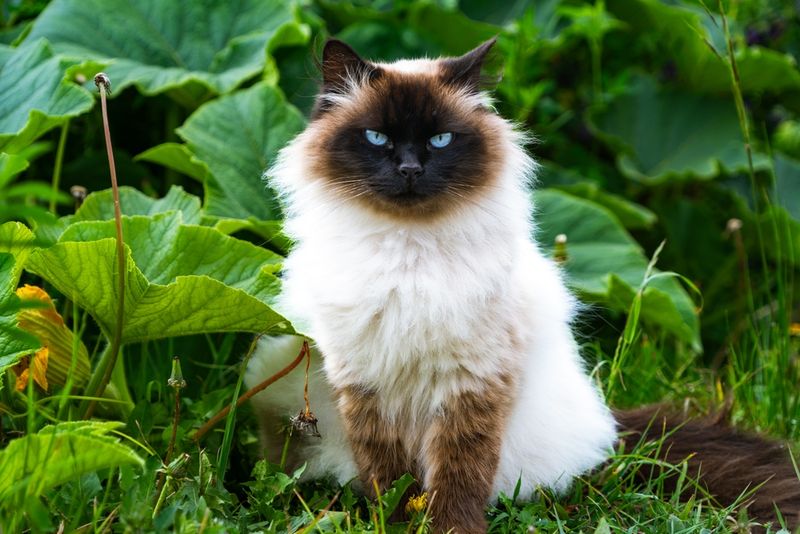
Temperature-sensitive magic creates the striking contrast in Himalayan (colorpoint) Persians. Their bodies remain cream or white while their extremities – face, ears, paws, and tail – develop darker coloration.
This fascinating pattern results from an enzyme that only activates in cooler body areas. Points come in various colors including seal, blue, chocolate, and lilac, each creating a different mood and appearance.

